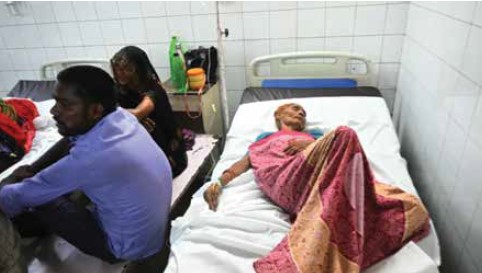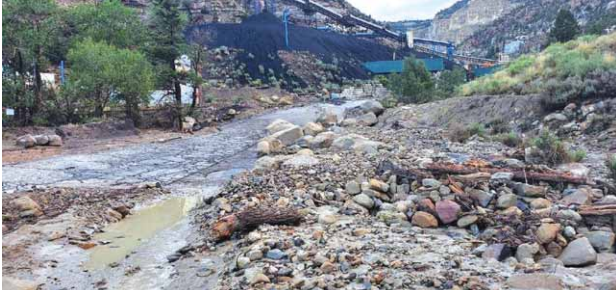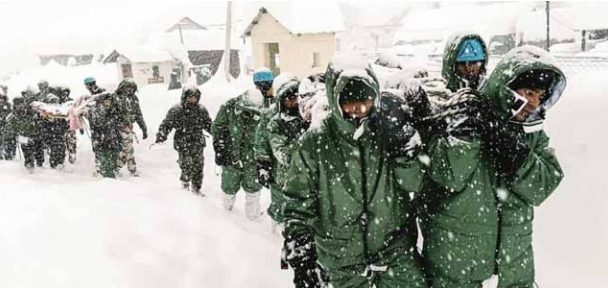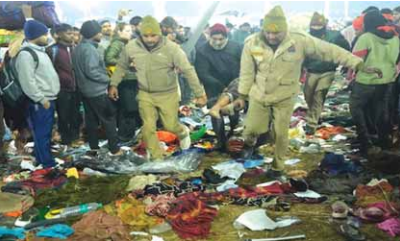On July 2, 2024, a tragic incident unfolded in the small village of Mughal Garhi in the Hathras district of Uttar Pradesh, India, leaving the nation in mourning. A crowd crush occurred at the conclusion of a satsang, a religious event organized by a self-styled godman, Suraj Pal, also known as Bhole Baba. The event, which was intended to be a spiritual gathering, turned into a horrific tragedy, claiming the lives of 121 individuals, primarily women and children, while injuring at least 150 others. This disaster unfolded when an overwhelming number of 250,000 people showed up for the event, far exceeding the 80,000 attendees for which permission had been granted.
The Incident: Chaos and Desperation
As the satsang drew to a close, a frenzy broke out among the massive crowd. Attendees, eager to catch a final glimpse of Bhole Baba and even touch the ground he had walked on, surged toward the exit. Witnesses described a scene of utter chaos as people attempted to push through narrow exits in a desperate bid to leave the makeshift tent that had been erected in a muddy field. Panic ensued as a sudden dust storm swept through the area, triggering fear and confusion among the already overcrowded attendees.
The tent, pitched atop slippery terrain, became a deadly trap. Many individuals slipped and fell, only to be trampled by the overwhelming wave of people pushing to escape. Tragically, some attendees fell into a roadside drain during the commotion, while others suffocated amid the throng. The crush was exacerbated by the heat of the day and the shock of the sudden panic, leading to a rapidly escalating death toll as individuals became trapped and unable to breathe.
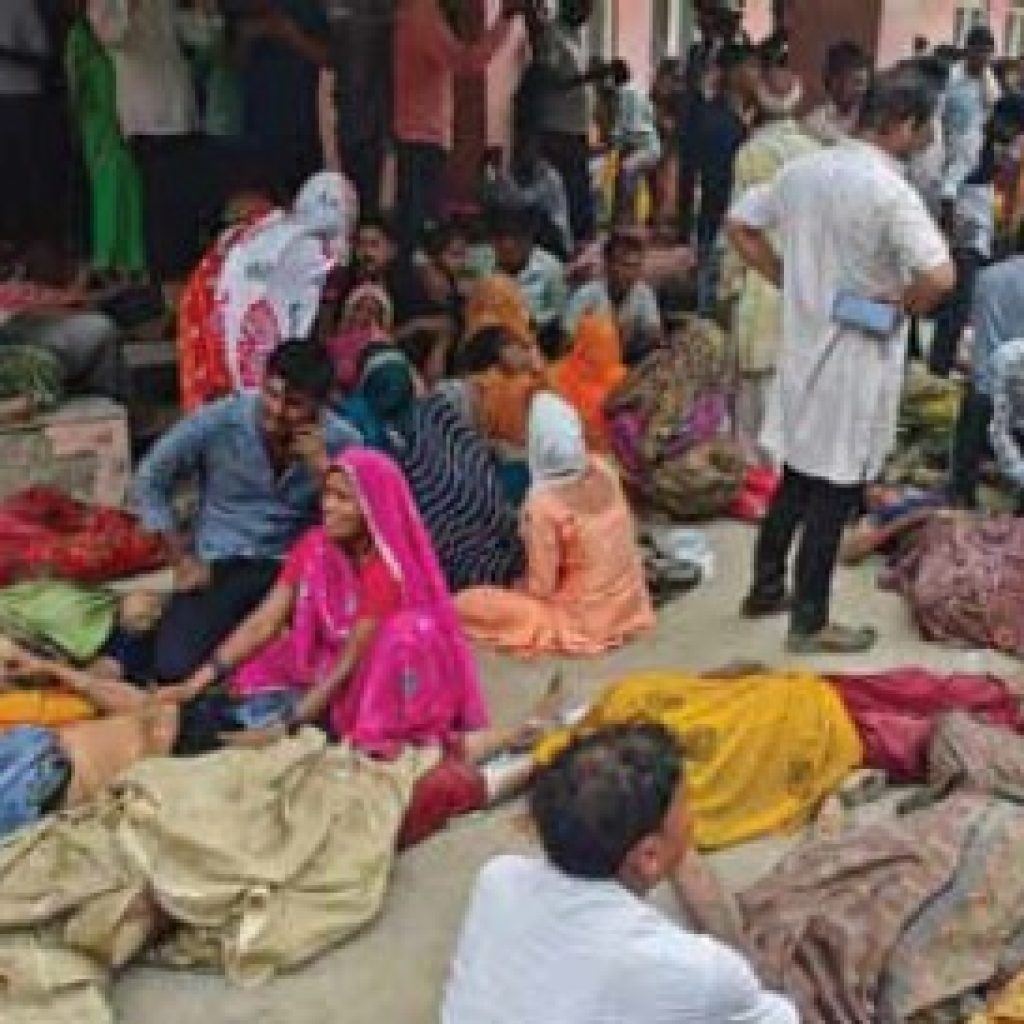
Victims of the Catastrophe
In the aftermath of the tragedy, the extent of the loss became painfully clear. Reports confirmed that among the deceased, at least 112 were women and seven were children. Many of the victims hailed from marginalized backgrounds, with a significant number belonging to the Dalit community, often considered the lowest caste in India’s rigid social hierarchy. The sheer scale of the tragedy has left the families of the deceased and injured grappling with grief, anger, and confusion in the wake of a disaster that should never have happened.
The medical response to the crisis was swift, with emergency services mobilizing to transport the injured to nearby hospitals. However, the sheer volume of casualties overwhelmed the local healthcare facilities, highlighting the inadequacies in emergency preparedness and response. Eyewitness accounts depict scenes of heartbreak and desperation as families searched for loved ones amid the chaos, praying for miracles amidst overwhelming sorrow.

The Aftermath: Government Response and Investigation
In the wake of this catastrophic event, the National Disaster Response Force (NDRF) was deployed to assist with rescue and recovery efforts. Tragically, the toll on responders was compounded when a police officer collapsed from a heart attack during the rescue operations. Chief Minister of Uttar Pradesh, Yogi Adityanath, announced an ex-gratia compensation of ₹200,000 (approximately $2,400) for the families of the deceased and ₹50,000 (approximately $600) for those injured. He also called for a thorough investigation into the cause of the disaster, emphasizing the need for accountability and transparency.
Investigative efforts revealed a concerning lack of preparation and oversight leading up to the event. The Uttar Pradesh Police lodged a First Information Report (FIR) against the event organizers, noting that they had failed to adhere to safety protocols and regulations. The authorities pointed to a multitude of factors contributing to the crowd crush, including the excessive turnout that far exceeded the permitted capacity, inadequate exit routes, and a lack of crowd management protocols.
The Role of the
Organizer and Legal Consequences
Suraj Pal, the self-styled godman behind the event, reportedly fled to his ashram in Mainpuri district following the disaster. His lawyers claimed that he denied responsibility for the tragedy, suggesting that “anti-social elements” were to blame for the chaos. In a stark twist of fate, at least 11 individuals, including several of Pal’s aides and the chief organizer of the event, were arrested in connection with the disaster.
The authorities launched a comprehensive judicial inquiry to investigate the events that led to the catastrophic crush. As the investigation unfolded, several government and police officials were suspended for their negligent handling of the event. The inquiry panel criticized the lack of proper notification and oversight, asserting that a senior district official had permitted the event to proceed without conducting a thorough inspection of the venue.
A Call for Accountability and Change
The horrific events in Hathras serve as a painful reminder of the critical importance of preparedness and management at large public gatherings. Experts in disaster management have pointed to several systemic issues that contributed to the tragedy. Overcrowding emerged as a primary concern, with police reports indicating that the attendance exceeded permitted limits by over 170,000 people. This gross mismanagement raises questions about the efficacy of event planning and crowd control measures.
Moreover, the absence of adequate exits from the makeshift tent became a fatal flaw in the design of the event. Disaster management specialists have emphasized the need for well-marked, accessible exit routes at large gatherings to facilitate safe evacuation in emergencies. Typically, large-scale events should have multiple clearly defined exits, allowing for a swift and orderly evacuation if panic arises.
The slippery conditions caused by the muddy terrain further exacerbated the situation. Witnesses reported that the crowd’s movement became chaotic when the rain began, contributing to the injuries and deaths. This incident underscores the need for thorough risk assessments that take into account environmental factors and ensure appropriate measures are in place to mitigate hazards.

Governmental Oversight and the Role of Authorities
Critics have pointed to a troubling pattern in India’s approach to managing public gatherings, particularly those organized by private religious entities. Sanjay Srivastava, a disaster management expert, noted that government agencies responsible for public safety, including the police and emergency services, are often overruled by politicians who seek to curry favor with religious leaders and their followers. This political influence can result in dangerous oversights, as evidenced by the catastrophic consequences of the Hathras disaster.
As public outrage continues to simmer, calls for reform and accountability are mounting. Many citizens demand that government authorities prioritize safety over political expediency and ensure that adequate resources are allocated to managing large events effectively. The catastrophic events of July 2 serve as a clarion call for systemic change in the way public gatherings are organized and managed in India.
National Condolences and a Pledge for Change
The national shockwaves reverberating from the Hathras tragedy prompted expressions of condolence from various quarters, including President Droupadi Murmu and Prime Minister Narendra Modi. Condolences poured in from international diplomats, including ambassadors from China, France, and Germany, highlighting the global resonance of the tragedy.
In the days following the disaster, Suraj Pal reiterated claims of a conspiracy surrounding the incident, maintaining that he was “deeply saddened” but also suggesting that the events were beyond his control. His denial of responsibility has only fueled further outrage among the public, who are grappling with the magnitude of the loss and the apparent lack of accountability from those in charge.
The Path Forward: Learning from Tragedy
As the dust settles on this devastating incident, it is essential for Indian authorities, event organizers, and society at large to reflect on the lessons learned from this tragedy. Moving forward, there must be a concerted effort to establish comprehensive guidelines and safety protocols for organizing large gatherings. These protocols should prioritize the safety and well-being of attendees, ensuring that no such tragedy occurs again.
Disaster preparedness training and capacity-building efforts for local authorities must be a cornerstone of these reforms. Investing in training programs that equip officials with the skills necessary to manage large crowds effectively is crucial for preventing future disasters. Additionally, public awareness campaigns educating citizens about safety protocols during large gatherings can empower individuals to make informed decisions in the face of emergencies.
A Nation in Mourning
The catastrophic crowd crush in Hathras stands as a heart-wrenching reminder of the fragility of life and the importance of safeguarding public events. The deaths of 121 individuals, primarily women and children, in the pursuit of spiritual connection should not have happened. As India mourns the loss, it must also pledge to address the systemic failures that allowed this tragedy to unfold.
The time has come for meaningful change in how large gatherings are organized, managed, and regulated. Only through concerted efforts to prioritize safety, accountability, and preparedness can we hope to prevent such tragedies from occurring in the future. In the memory of those lost in Hathras, may we strive for a more compassionate and responsible approach to public gatherings, ensuring that spirituality is never overshadowed by catastrophe.
Source:
www.aljazeera.com


